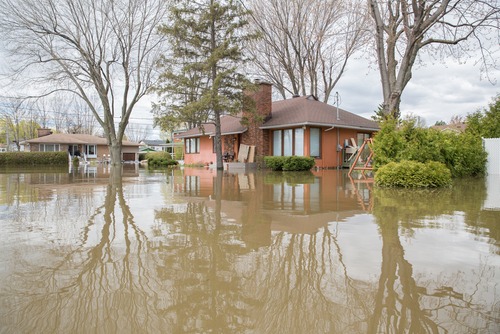
The U.S. House of Representatives passed two bills focused on disaster recovery this week.
H.R. 5641, the Small Project Efficient and Effective Disaster (SPEED) Recovery Act, was advanced by the House Committee on Transportation and Recovery would make disaster recovery more efficient and quicker, Congress members said.
“In this era of climate crisis, no communities are safe from the potentially devastating impact of disasters,” Transportation and Infrastructure (T&I) Committee Chair Peter DeFazio (D-OR) said. “The SPEED Recovery Act will cut red tape and reduce the time it takes communities to receive critical assistance for small disaster recovery projects from FEMA. By updating the threshold for what qualifies as a small project, barriers to relief and recovery will be alleviated, and so will the time it takes communities to get back on their feet post-disaster.”
The bill, authored by U.S. Rep. Sam Graves (R-MO), would increase what qualifies as a small project under the Robert T. Stafford Disaster Relief and Emergency Assistance Act to $1 million. Graves, the T&I Committee Ranking Member, said the bill would allow more recovery projects to qualify under the simplified procedures. The bill would also require that the threshold be reviewed every three years.
“The SPEED Recovery Act is going to dramatically reduce the number of hoops communities have to jump through with FEMA to get much-needed help,” Graves said. “Congress created an expedited process for small disaster recovery projects to get approved through FEMA, but the threshold for what qualifies as a ‘small project’ has fallen out of touch with reality. Updating this threshold is going to reduce the burden of red tape on small communities and allow them to recover from disasters faster.
The House also passed a bipartisan T&I plan to deploy disaster resources faster.
H.R. 5689, the Resilient AMERICA Act, would address disaster resilience while expanding coverage for hazard mitigation, officials said. Introduced by DeFazio in October 2021, the bill would require the Federal Emergency Management Agency (FEMA) to set aside 10 percent of its funds each year to further the implementation of the latest building codes and to carry out a pilot program allowing states and localities to award grants to individuals for retrofitting their residences with hazard mitigation measures.
“Communities around the country are being hit harder than ever before by natural disasters and extreme weather events due to the ongoing climate catastrophe,” DeFazio said. “In addition to taking rapid action to decarbonize, we must also prepare our neighborhoods and infrastructure for these increasingly violent events.”
The bill will also permit the redistribution of unclaimed or unobligated hazard mitigation funds from a major disaster after 84 months; increase the aggregate amount of grants for national public infrastructure pre-disaster mitigation assistance to 15 percent, up from 6 percent; make private non-profit facilities eligible for technical and financial assistance to implement pre-disaster mitigation measures; and expand the use of hazard mitigation assistance to cover activities surrounding wildfires, tsunamis, and ice storms.
“The Resilient AMERICA Act will reduce disaster damages and hardships by placing a higher priority on disaster mitigation,” Graves said. “In my district, many people have suffered losses to their homes and business because of flooding, and this bill makes commonsense reforms to ensure that we invest more FEMA resources on the front end to reduce and prevent the impacts of floods and other disasters before they can strike.”